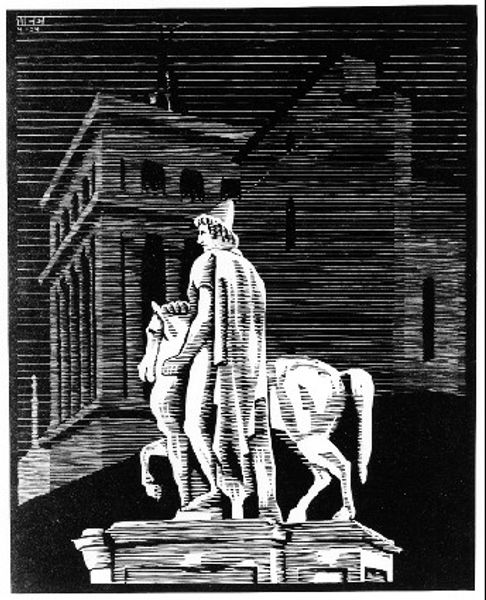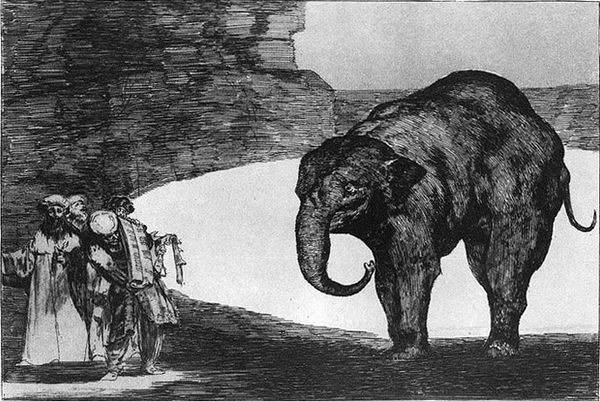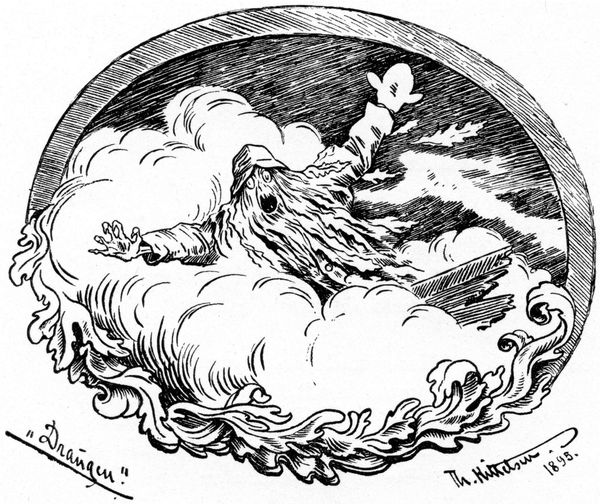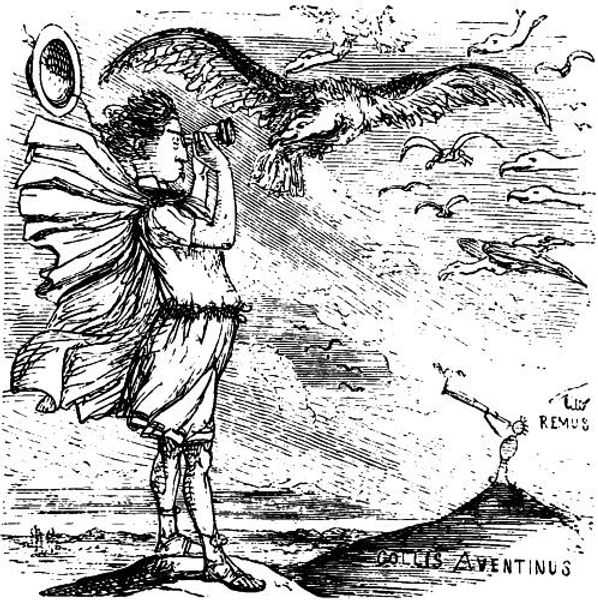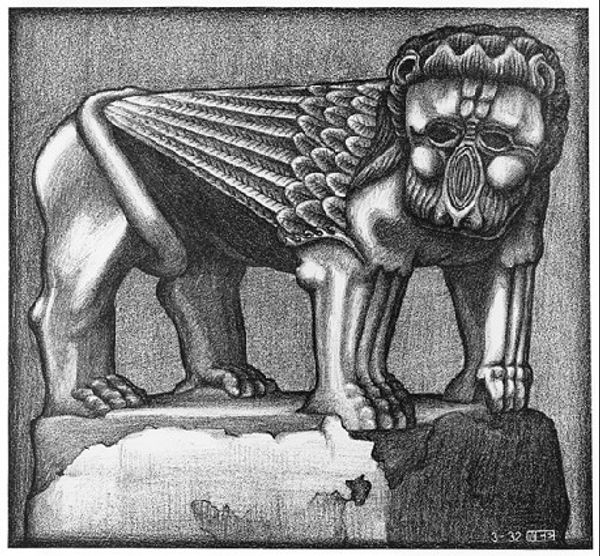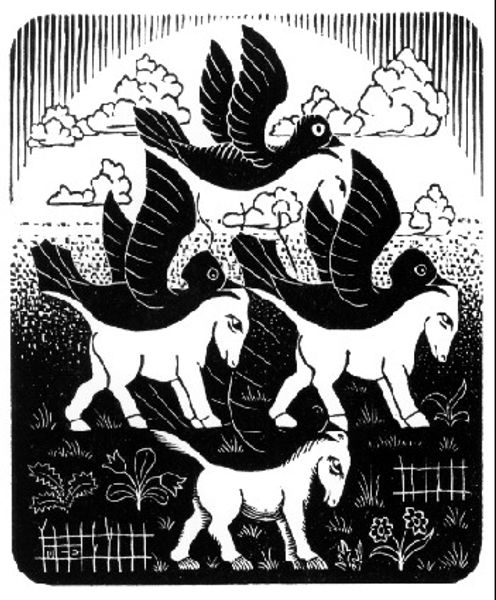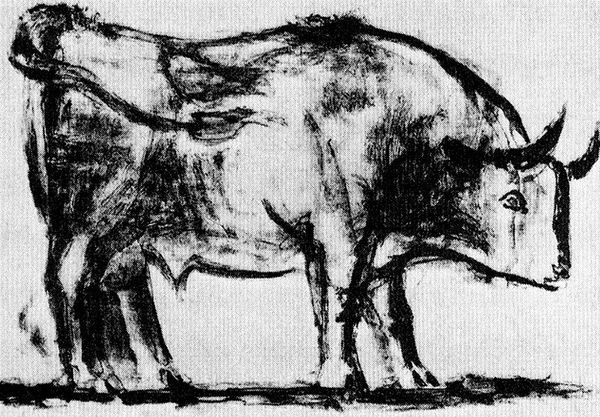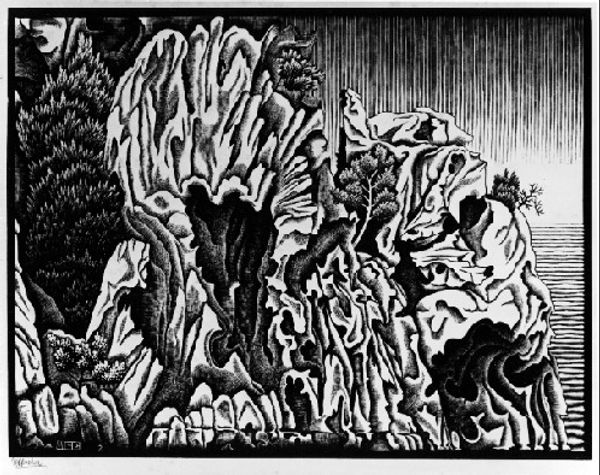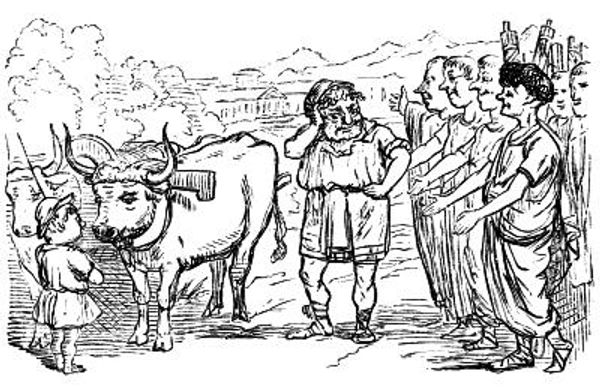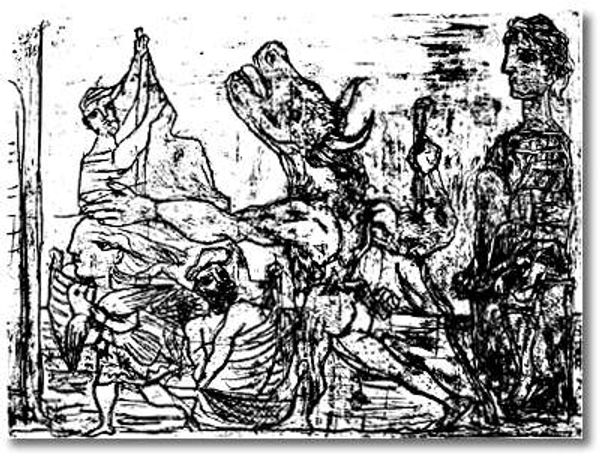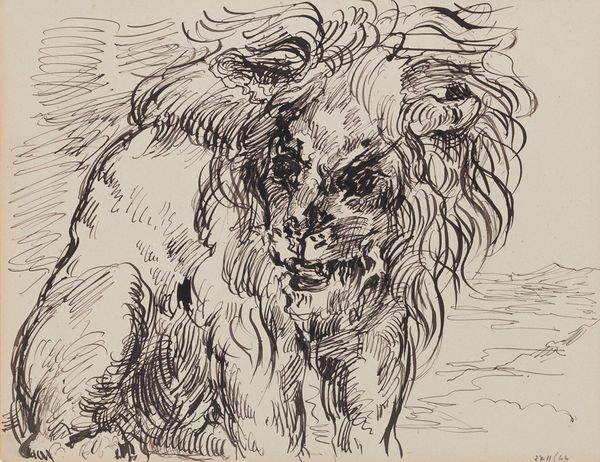
#
line-art
#
comic strip sketch
#
statue
#
webcomic
#
mechanical pen drawing
#
pen illustration
#
junji ito style
#
ink line art
#
linework heavy
#
manga style
#
men
#
comic style
#
organism
Copyright: Anna Ostroumova-Lebedeva,Fair Use
Editor: This woodcut, "The Lion and the Fortress," intended for the magazine 'World,' showcases some powerful imagery with that majestic lion atop the formidable structure. It's got this really striking, almost stark, quality. What are your thoughts on the means of production and material constraints behind it? Curator: It's tempting to read the lion as a symbol of power, dominating the urban landscape, but a materialist approach requires a shift in focus. How does the process of woodcutting, the labour involved in its production, shape our understanding? Think of the artist's hand, meticulously carving into the wood, each line demanding a physical engagement. This process dictates the sharp contrasts and textures that define the image. Editor: So, it's less about the lion as a symbol of dominance and more about the act of creating that symbol using wood? Curator: Precisely. Consider the context of mass production for the magazine. The woodcut facilitated reproduction, disseminating this image to a wider audience, turning what might have been a singular artwork into a commodity. Who was consuming this imagery, and how might their social class have influenced their interpretation? Editor: That’s fascinating. It changes my perspective completely. Instead of just seeing a lion, I’m thinking about the labor and the economic forces at play behind the printed image itself, reaching perhaps many readers. Did the artist chose woodcut to deliberately target such a wide readership? Curator: We might speculate, but ultimately, understanding the art requires examining the relationships between artistic production, materiality, and social context. Were other competing reproduction techniques also readily available at the time? Which social classes would they have targetted instead? Editor: This makes me consider the consumption of art so much more now; I am thinking beyond the symbolism towards production. Curator: Yes! This understanding allows us to move past individual interpretations and recognize how art functions within broader systems of labour and commodity exchange. Editor: I’ll never look at a woodcut the same way again!
Comments
No comments
Be the first to comment and join the conversation on the ultimate creative platform.
